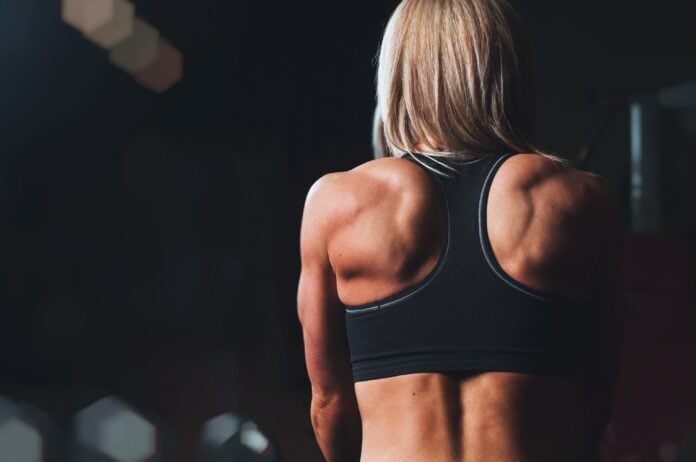Musculus Rhomboideus Major
Two bilateral, superficial muscles in the upper back are called the rhomboids. They are made up of two functionally identical muscles, the rhomboid primary and minor. They are composed of trapezius, levator scapulae, and latissimus major, which form the superficial layer in the extrinsic back muscle.
Between the nuchal ligament, the spinous process of the thoracic vertebrae, and the scapula are located the rhomboid muscle. The dorsal and scapular nerves innervate the rhomboids. They primarily retract the scapula supramedially and rotate glenoid cavities. The rhomboids help to stabilize and strengthen the shoulder. This article will explain the anatomy and functions of the Rhomboid muscles.
Key Facts about the Rhomboid Muscles
- Rhomboid minor: Nuchal ligament, Spinous processes of vertebrae.
- Rhomboid major : Spinous process.
Insertion:
- Rhomboid minor: Root (medial ending) of the spine of the scapula.
- Rhomboid major: Medial border between the scapula and inferior angle (from the root of the spine to the root of the scapula).
Action:
- Scapulothoracic joint,
- Draws scapula superomedially,
- Rotates glenoid cavity inferiorly,
- Supports position of the scapula.
Innervation
- Dorsal scapular nerve
Blood supply
- Dorsal scapular artery,
- Deep branch of the transverse cervical artery,
- Dorsal branch of upper five or six posterior intercostal arteries.
Origin and Insertion
The small cylindrical Rhomboid Minor muscle is made up of two layers: ventral and dorsal. They partially surround the inferior levator capulae. The nuchal ligament and spinous process of the first thoracic and seventh cervical vertebrae are responsible for Rhomboid Minor.
The muscle extends obliquely to the inferolateral direction to insert into the base medial to the spine of the scapula. The dorsal layer attaches dorsolaterally and inferior to the levator scapulae, while the ventral layer inserts anteromedially towards the levator scapulae. The ventral layer’s insertion point is where the serratus anterior and rhomboid major fasciae join. A thin muscle known as the rhomboid interior, which can be found between the occipital and rhomboid major bones, is sometimes seen in certain people.
The broad quadrilateral Rhomboid Major is a muscle of large size that arises from spinous processes in the second to fifth thoracic vertebrae. The muscle extends inferolateral to insert into the medial edge of the scapula between the inferior angle of the spine and the root of the scapula. Attachment occurs on both the costal and dorsal sides of the medial border.
Relations
The trapezius muscle covers the trapezius muscles and the rhomboid muscles are overlaid by the deep (intrinsic) muscles of the back. The triangular area is located over the inferior border (triangle or auscultation) of rhomboid minor.
This area is bordered on the inferior side by the trapezius, minor rhomboid superolateral, and latissimus major superiorly on the supermedially. This landmark is important for lung auscultation. Although the rhomboids are usually separate muscles, they can be combined in certain cases. Rhomboid minor overlaps partially with the superior portion rhomboid main.
Innervation
The dorsal and rhomboid nerves innervate both rhomboid muscle groups. This nerve is a branch of the brachial complexus.
Blood Supply
Three sources of arterial blood are available to the Rhomboid major and Minor.
Function
The main action of the rhomboid muscle is scapular retraction around the scapulothoracic junction. Scapular retraction is the simultaneous sliding of the upper and lower scapulas along the trunk. The superomedial movement is caused by the scapula rotating the glenoid cavity in an inferior direction, causing the shoulder girdle to drop.
The rhomboids prevent excessive scapular protraction and help maintain correct posture while sitting, standing, and walking. The scapula is also stabilized by the contraction of the Rhomboids. This anchors the upper limb and allows them to move around.
Clinical Relationships
The rhomboid muscle can have a significant impact on upper body posture and shoulder mechanics. A number of factors can contribute to poor upper body posture. The first is that shoulders and scapulae can become extended. This can cause pain in the upper back, particularly along the medial border.
The rhomboids are a good choice to strengthen the muscles that control scapular retraction. This will relieve the pain and improve the upper body’s posture. They can become dysfunctional from the constant postural strain that the rhomboid muscle muscles are subject to. This can cause poor shoulder mechanics by limiting the superior rotation of the scapula or glenoid cavity. Soft tissues can also become painful and infected at the shoulder, especially when arm elevation is above shoulder height. These include sports like volleyball and tennis.


